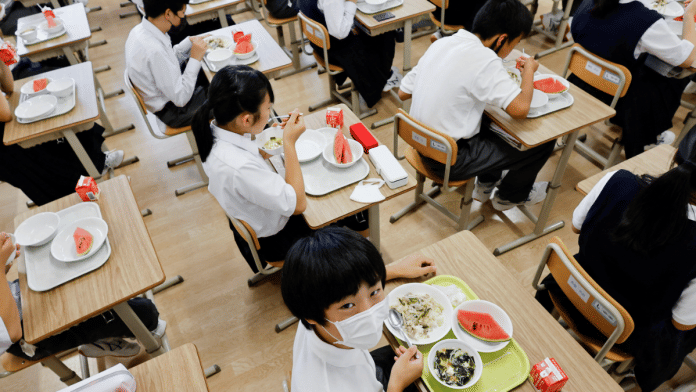April marks the start of a new school year in Japan. While the country is globally recognized for its high standards of basic academic skills, the COVID-19 pandemic has exposed disparities in education. In response, both public and private sector initiatives are working to bridge the gaps and ensure more equitable access to learning.
The Basic Act on Education stipulates that “all citizens shall be given equal opportunities to receive education according to their ability” and that “no citizen shall be discriminated against in education on account of race, creed, sex, social status, economic position or family origin”. In accordance with this law, nine years of compulsory education are mandated, during which tuition is free at national or public elementary and junior high schools.
Equally notable is the strong academic performance seen in Japan’s compulsory education system. In the 2023 IEA Trends in International Mathematics and Science Study (TIMSS), Japanese students ranked in the top five in nearly all categories in maths and science at both elementary and junior high school levels, with the exception of fourth-grade science ranking sixth. In the latest Programme for International Student Assessment (PISA) conducted by the OECD in 2022, Japanese 15-year-olds ranked in the top five in all subjects: mathematical literacy, scientific literacy and reading.
Due to strong academic results, educational disparity has not been a widely discussed issue in Japan, until the pandemic exposed significant inequalities in the quality of education children receive. Government surveys indicate a clear correlation between higher household income and higher university enrollment rates, with students residing in major metropolitan areas such as Tokyo and Osaka exhibiting a higher likelihood of progressing to university and graduate school. Government and private sector initiatives are now being implemented to address disparities caused by household economic status and regional differences.
Democratizing educational support
In April 2024, the Japanese government updated the High School Tuition Support Fund Programme, with the aim of providing more equitable access to education. In the past, the support funds were inaccessible if parents’ income surpassed a specific threshold, limiting access for many families. In addition, the varied levels of tuition support provided by local prefectures, independent of the national government, have resulted in unfair situations where students attending the same high school faced differing tuition burdens depending on the prefecture of residence.
Starting in April 2025, however, an annual support fund of JPY118,800 is provided uniformly across the country, regardless of parental income. This amount corresponds to the tuition fee of public high schools, effectively eliminating tuition costs. Furthermore, from April 2026, the income cap will also be removed for support funds provided to private high-school students, up to a maximum of JPY457,000 per year. This change will effectively make private high-school tuition free as well.
Outside of the school system, local governments are also implementing support measures. For example, Kamakura City, west of Tokyo, is working in cooperation with non-profit organizations and companies to provide economically disadvantaged children coupons that can be used at various learning venues. As Japan’s relative child poverty rate is reported to be 11.5%, such initiatives are designed to help prevent situations where students give up on attending high schools for financial reasons.
Online tools overcome regional disparities
Disparities in learning between urban and rural areas have also been a challenge to address due to differences in the number and variety of schools, as well as the availability of educational support facilities, including extracurricular cram schools and preparatory schools.
One way to bridge these regional gaps is the use of online learning tools. Companies including SuRaLa Net and Benesse provide online learning tools that are designed to allow students to learn according to their individual abilities. Using game and animation characters, these tools promote comprehension through cycles of learning, practice and testing. Recruit also offers a low-cost, flat-rate subscription service that allows students to regularly access online classes geared toward university entrance exams.
The adoption of these tools is expanding both within and beyond the school system, with an increasing number of local governments implementing SuRaLa Net’s tools, particularly to support at-home learning for children facing challenges attending school. Meanwhile, Benesse’s offerings are widely adopted in high schools.
In addition, at high school level, the rise of online institutions such as N High School is gaining momentum. These schools offer students the opportunity to engage in diverse learning experiences, interact with peers and participate in extracurricular activities, all without the constraints of geographic location. This development plays a crucial role in reducing educational disparities across regions.
Access to equitable education is an inherent right for all children, as outlined in the United Nations Sustainable Development Goals (SDGs). Public and private efforts are both essential in driving innovation, building resilience and supporting the long-term sustainability of the economy. Ongoing collaboration among governments, businesses and local communities to ensure equal educational opportunities will be critical in unlocking the full potential of education and achieving an inclusive, forward-thinking society where no one is left behind.
Naoko Tochibayashi, Communications Lead, Japan, World Economic Forum
Mizuho Ota
This article is republished from the World Economic Forum under a Creative Commons license. Read the original article.






